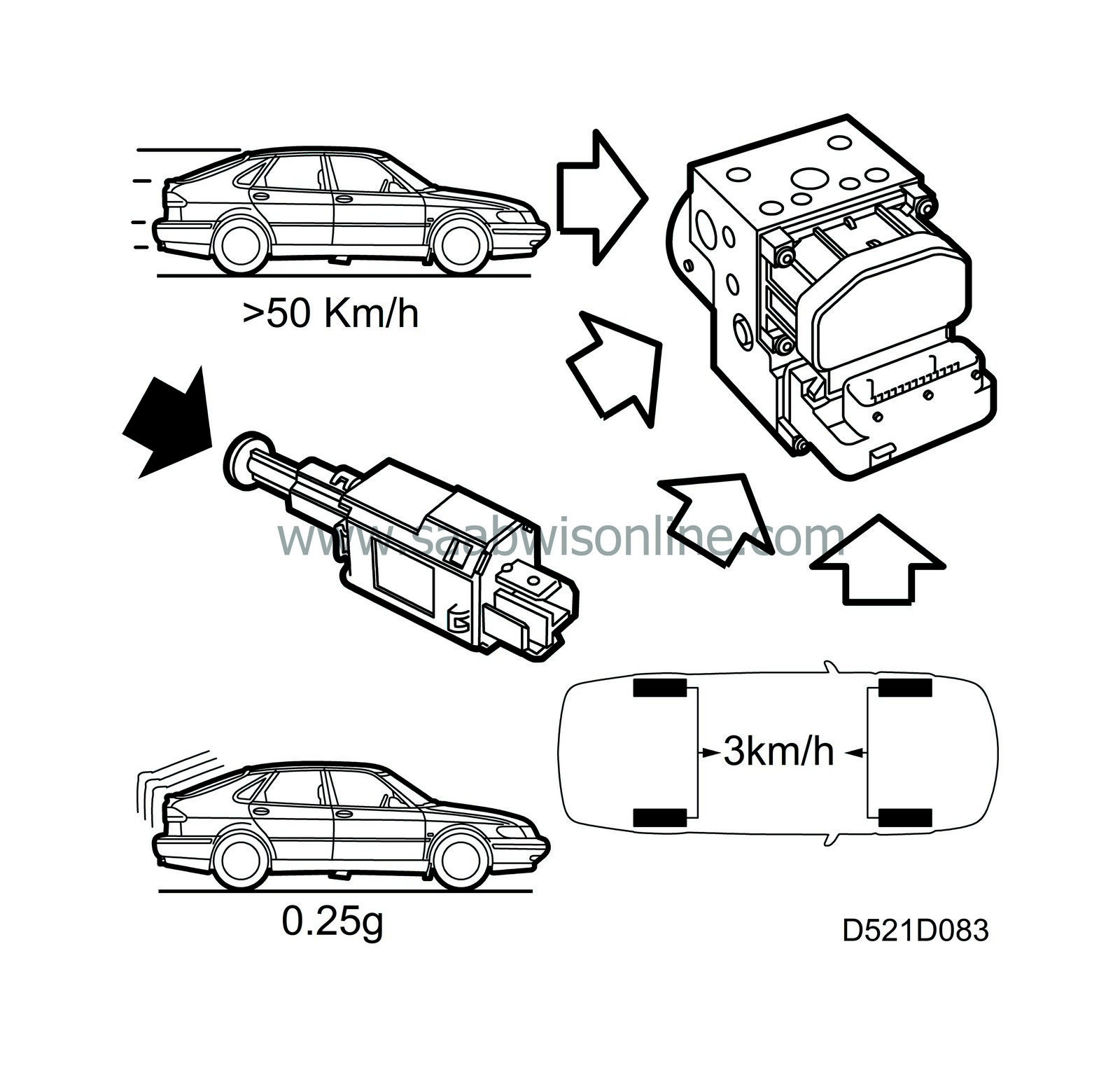EBD (Electronic Brake-force Distribution)
| EBD (Electronic Brake-force Distribution) |
The EBD function comes into play before the normal ABS mode and usually enhances ride comfort for the vehicle occupants.
For good directional stability during braking, it is important that the rear wheels do not lock up first. In order to achieve this with varying load situations (for example, a heavily loaded vehicle requires greater braking force to achieve locked wheels), the control module uses the wheel speed and regulates the rear wheel braking force using the electromagnetic inlet valves so that permissible slip between front and rear wheels does not exceed 3 km/h.
The EBD function will not become operative unless the following criteria are met:
| • |
The road speed of the car is greater than 50 km/h.
|
|
| • |
The control module receives a signal from the brake-lights switch telling it that the brake has been applied.
|
|
| • |
The retardation force is greater than 0.25 g.
|
|
| • |
The relative slip between the front and rear wheels is greater than 3 km/h.
When these criteria have been met, the rear-wheel inlet valves close and the EBD function is activated to keep the relative slip to below 3 km/h. If any wheel tends to lock during EBD modulation, the control mode switches to normal ABS modulation. |
|



